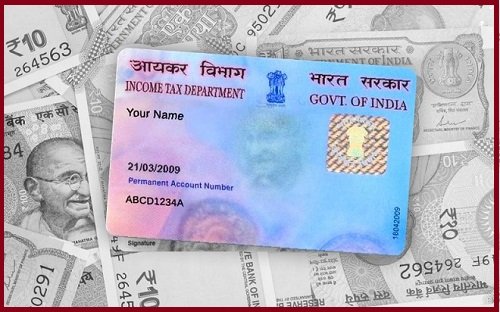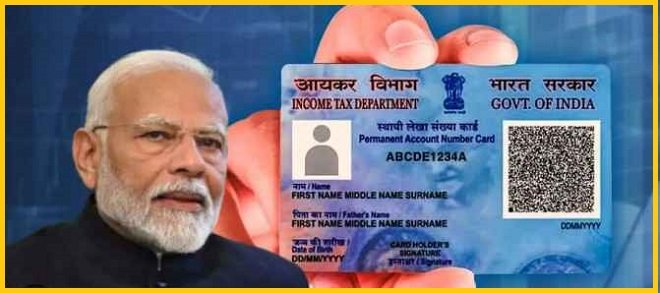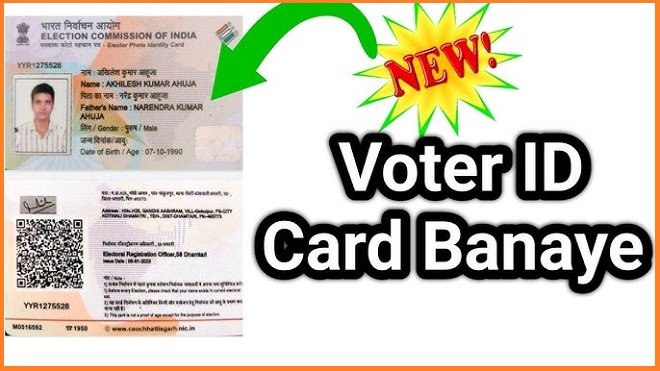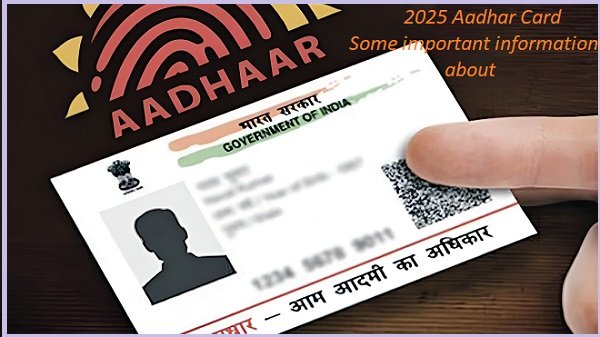PAN Card 2025
Permanent Account Number (PAN) – A Comprehensive Guide
Introduction to PAN
The Permanent Account Number (PAN) is a unique ten-character alphanumeric code issued by the Income Tax Department of India. It is mandatory for all taxpayers, businesses, and individuals engaging in financial transactions in India. PAN plays a crucial role in tax filing, identity verification, and financial transparency.

Structure of PAN
A PAN follows a specific structure: AAAAA9999A
First three characters – Alphabetic sequence (AAA to ZZZ)
Fourth character – Identifies the type of entity:
P – Individual
C – Company
H – Hindu Undivided Family (HUF)
A – Association of Persons (AOP)
B – Body of Individuals (BOI)
F – Firm
T – Trust
L – Local Authority
J – Artificial Juridical Person
G – Government
Fifth character – First letter of the surname (for individuals) or entity name (for businesses)
Next four characters – Unique numeric identifier
Last character – Alphabetic check digit
Example: ABCDE1234F
Provisions Related to PAN
Issued under Section 139A of the Income Tax Act, 1961.
Mandatory for individuals and businesses filing income tax returns.
Lifetime validity (remains unchanged regardless of relocation).
Must be linked with Aadhaar for verification.
Essential for financial transactions exceeding a specified limit.

Uses of PAN
- Income Tax Filing & Compliance
Required for filing income tax returns (ITR).
Helps in tracking tax payments and financial transactions.
Ensures transparency and prevents tax evasion.
-
Banking & Financial Transactions
Necessary for opening bank accounts (savings, current, fixed deposits).
Mandatory for transactions above ₹50,000.
Required for investments in stocks, mutual funds, bonds, and real estate.
-
Loan & Credit Card Applications
PAN is compulsory for applying for loans (home, car, personal loans, etc.).
Required for credit card approvals and financial background verification.
-
Property Transactions & Business Registration
Mandatory for property purchases/sales exceeding ₹5 lakh.
Essential for business registrations, GST registration, and company formation.
-
Foreign Exchange & Investments
Required for foreign remittances above ₹50,000.
Helps track overseas investments and money transfers.
How to Obtain a PAN
Who Can Apply for PAN?
Indian Citizens (Individuals, salaried employees, students, and self-employed persons)
Hindu Undivided Families (HUFs)
Companies, LLPs, and Partnerships
Trusts, NGOs, and Societies
Foreign Citizens & Foreign Entities operating in India
Steps to Apply for PAN
Online Application
Visit NSDL or UTIITSL official website.
Fill out Form 49A (for Indian citizens) or Form 49AA (for foreign nationals).
Upload identity, address, and date of birth proof.
Pay the application fee online.
Receive PAN via post or email within 15-30 days.
Offline Application
Download and fill Form 49A/49AA from the Income Tax Department website.
Attach required documents and submit them at a PAN center.
Receive PAN card within 15-30 working days.
Accepted Documents for PAN Application
-
Proof of Identity
Aadhaar Card
Passport
Voter ID
Driving License
Ration Card with photograph
Government-issued ID for Government Employees
-
Proof of Address
Aadhaar Card
Passport
Utility Bill (Electricity, Water, Gas, Telephone)
Bank Statement
Voter ID
Rent Agreement
PAN for Foreign Citizens & Entities
Foreigners investing in India or setting up businesses must also obtain a PAN. Required documents include:
Copy of passport (foreign citizens)
Address proof from foreign country or India
Foreign institutional investors must provide registration certificates

PAN Requirements for Businesses
Entities such as firms, LLPs, and companies must apply for a PAN to conduct business in India. Documents required include:
Certificate of Incorporation
Memorandum and Articles of Association
Registration Certificate (for LLPs and firms)
Transactions Requiring PAN Quotation
PAN must be quoted in the following transactions:
Deposits exceeding ₹50,000 in banks
Property purchase/sale over ₹5 lakh
Stock, mutual fund, and bond transactions exceeding ₹50,000
Foreign exchange transactions over ₹50,000
Buying jewelry worth more than ₹5 lakh
Notice of Changes in PAN Details
If a PAN holder changes their name, address, or signature, they must submit a PAN correction request with supporting documents. The correction can be done online or at PAN service centers.
Application for New PAN Under New Series
If a PAN card is lost or damaged, one can apply for a reprint or request a new PAN under a revised series using Form 49A.
PAN vs Payment Card Number
Although similar in structure, PAN and payment card numbers serve different purposes:
PAN is for taxation and identity verification.
Payment Card Numbers (PCN) are used for financial transactions.
PAN does not change, whereas PCN may change if the card is lost or reissued.
Conclusion
The Permanent Account Number (PAN) is an indispensable document for tax compliance, financial transactions, and business operations in India. It ensures financial transparency, helps in tax filings, and prevents fraudulent activities. Whether you are an individual, business entity, or foreign investor, obtaining and using a PAN correctly ensures smooth financial activities. Apply today and secure your financial identity in India!
Permanent Account Number (PAN) – Everything You Need to Know
Introduction
A Permanent Account Number (PAN) is a unique, 10-character alphanumeric identifier issued by the Income Tax Department of India. It is crucial for financial transactions, tax filings, and identity verification. PAN is essential for both individuals and businesses.
Structure of PAN
A PAN follows a standard format: AAAAA9999A
The first five characters are letters (alphabets).
The next four characters are numbers (digits).
The last character is a letter (alphabet).
The fourth letter represents the PAN holder’s category:
P: Individual
H: Hindu Undivided Family (HUF)
C: Company
F: Firm
A: Association of Persons (AOP)
T: Trust
Provisions and Uses of PAN
Mandatory Uses of PAN
Filing Income Tax Returns (ITR)
Opening a bank account
Buying or selling assets above ₹50,000
Depositing cash above ₹50,000 in banks
Applying for a credit card
Purchasing foreign currency
Buying jewelry over ₹2 lakh
Investing in securities above ₹50,000
For businesses with turnover exceeding ₹5 lakh
Property transactions above ₹10 lakh
Other Uses of PAN
Acts as proof of identity
Helps prevent tax evasion
Required for loan applications
Mandatory for GST registration
How to Apply for PAN?
Who should apply?
Indian citizens
Foreign citizens doing business in India
Companies, firms, and organizations
Trusts and non-profit entities
Steps to Apply for PAN
Visit the NSDL or UTIITSL website.
Select the appropriate form:
Form 49A (for Indian citizens)
Form 49AA (for foreign citizens)
Fill in the details like name, date of birth, and address.
Upload required documents.
Pay the processing fee.
Submit the application and track status.
Receive PAN card at the registered address.
Documents Required for PAN
For Individuals and HUF
Proof of Identity:
Aadhaar Card
Passport
Voter ID
Driving License
Ration Card
Proof of Address:
Utility Bills (Electricity, Water, Gas)
Aadhaar Card
Passport
Rental Agreement
For Businesses & Non-Individuals
Certificate of Incorporation (Companies)
Partnership Deed (Firms)
Trust Deed (Trusts)
Registration Certificate (LLPs)
PAN for Foreign Citizens
Foreign citizens or entities conducting financial transactions in India must obtain a PAN. They need to submit:
Conclusion
A Permanent Account Number (PAN) is an essential tool for financial identity in India. Whether you are an individual, a business owner, or a foreign entity dealing in India, having a PAN is mandatory for smooth financial transactions. Understanding the structure, uses, and application process ensures compliance with Indian tax laws and hassle-free banking operations.
Stay informed, stay compliant!









